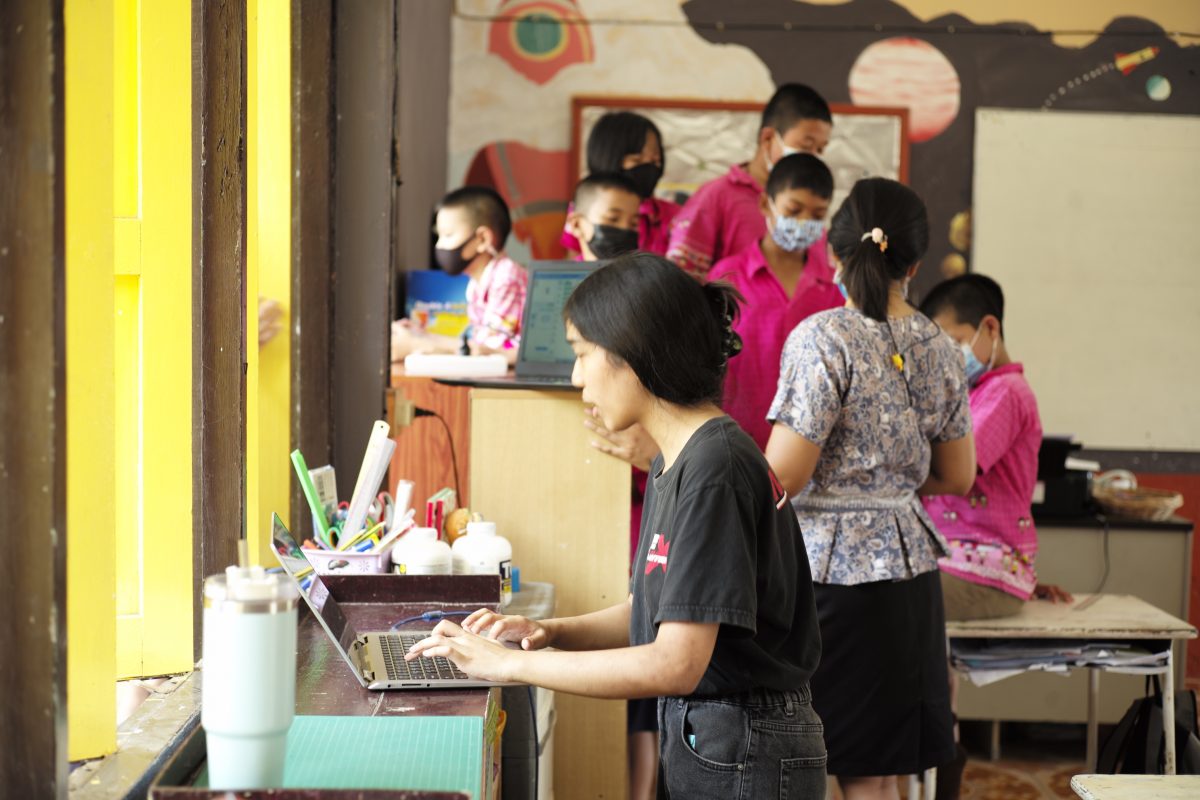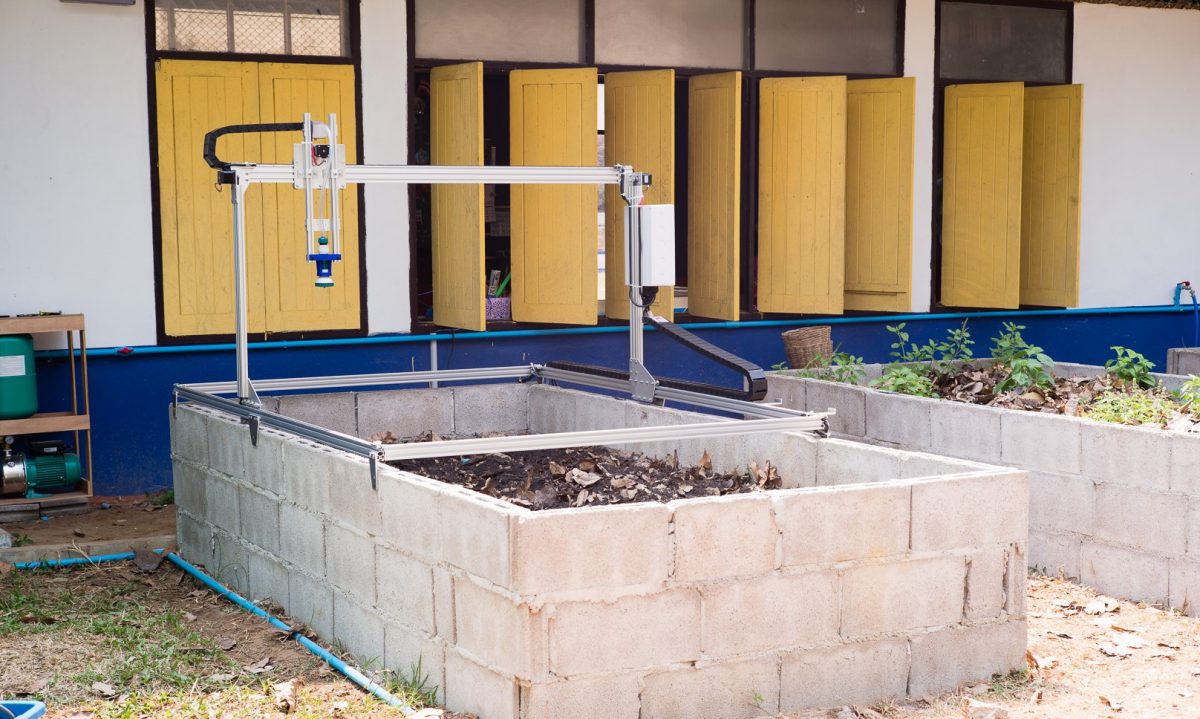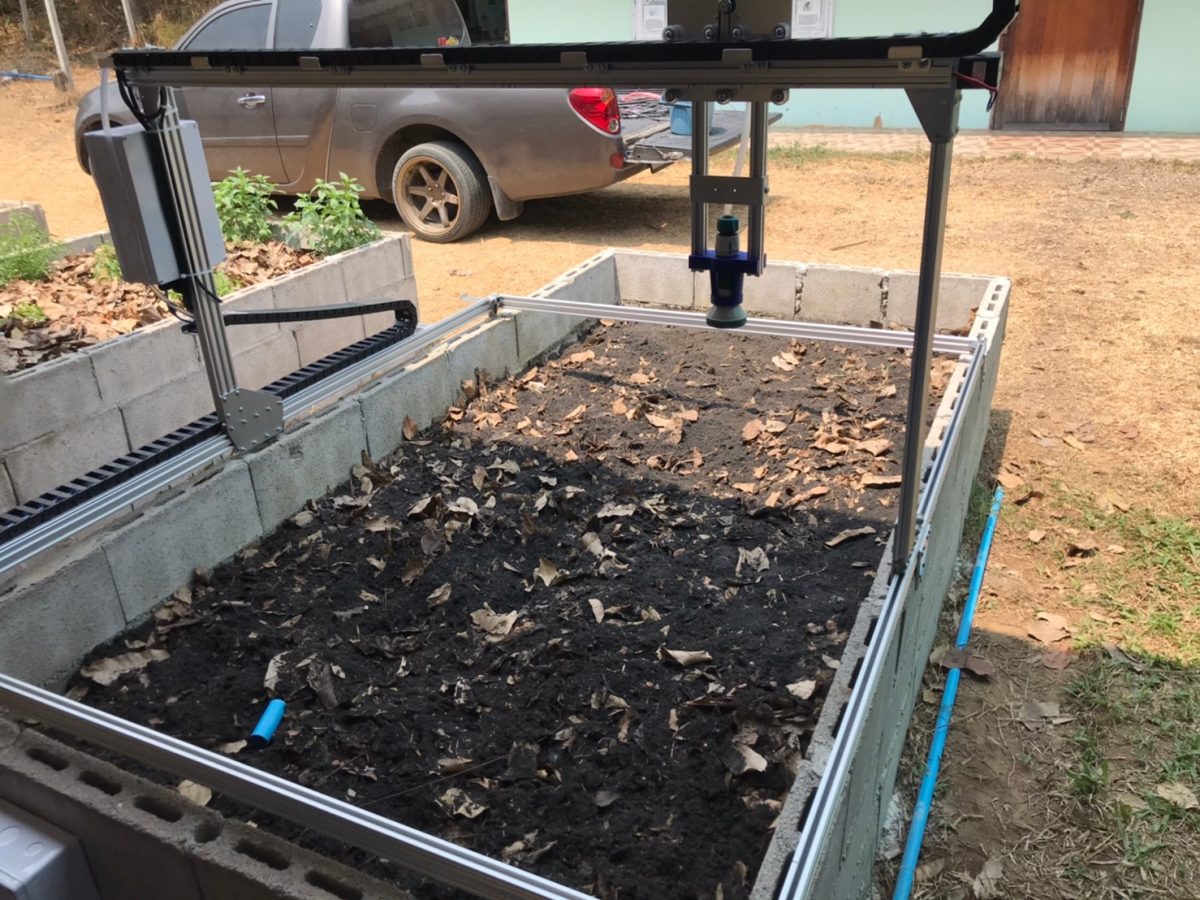A team of engineering students has developed CNC Smart Farm as an educational tool to learn coding for elementary school students in a marginalized area of Ratchaburi province. The device aims to stimulate science learning for children through hands-on activities demonstrating how science and technology can be used in their everyday life.
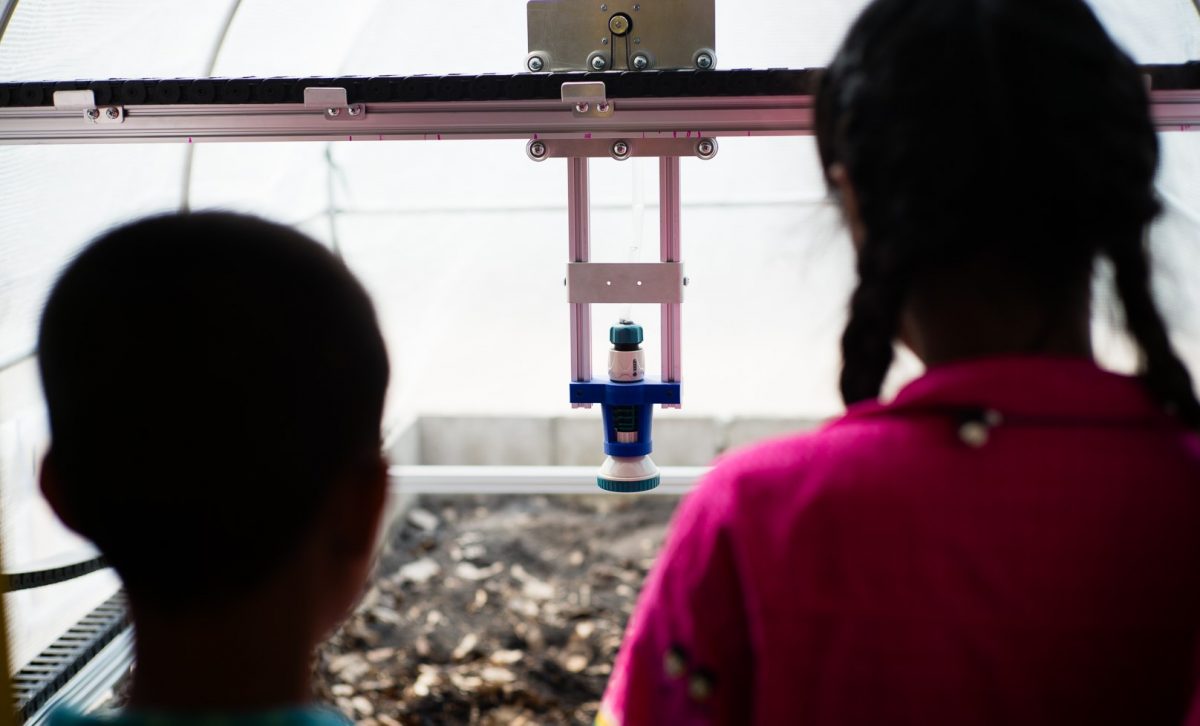
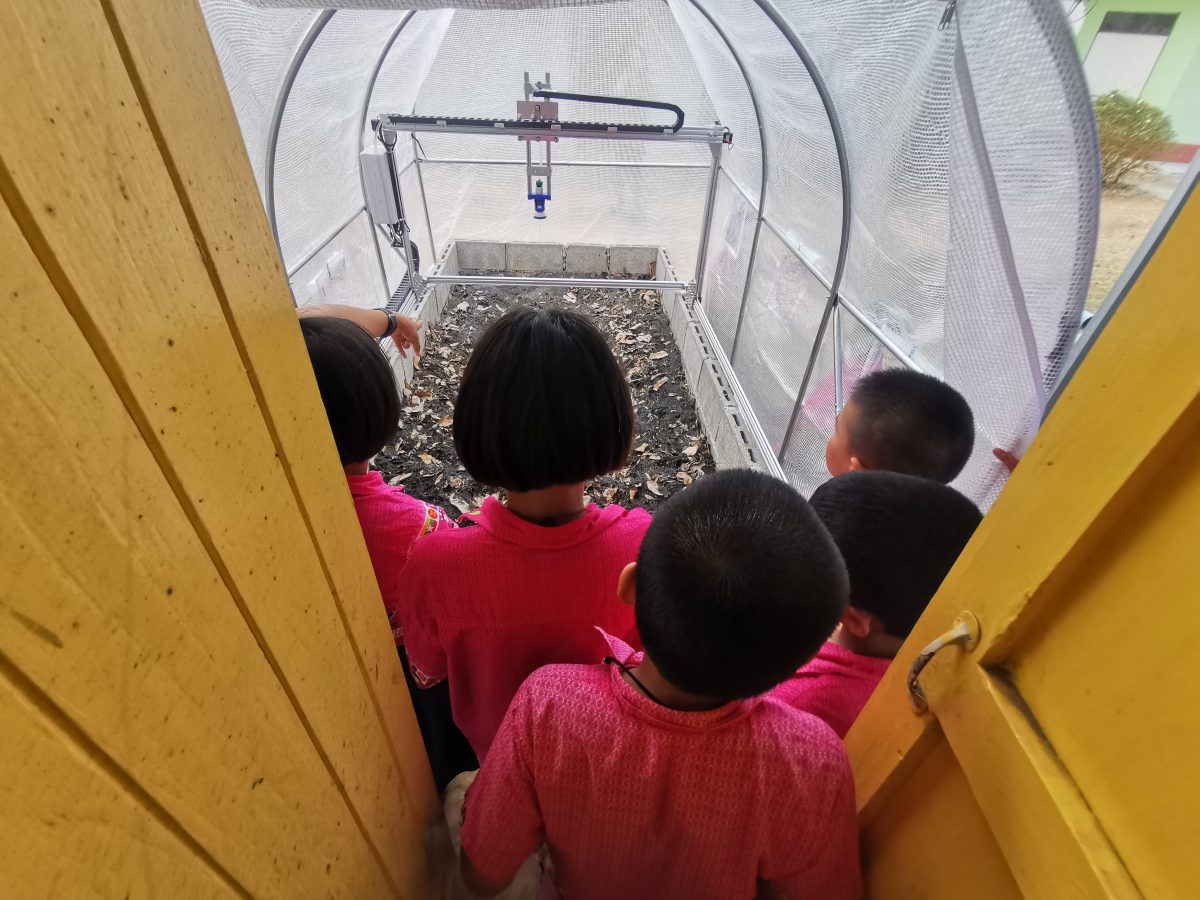
CNC Smart Farm was created by Kittikan Kongmanee, Nathawan Khaosang, and Natchanon Nirapai, three fourth-year students from the Department of Mechanical Engineering. Funded by the Equitable Education Fund, their project was to create a learning media for an online education during the pandemic for Watrangsanaenakornjan School located in a remote area in Ratchaburi province.



“The assignment given to students was to design a coding tool suitable for elementary school children, where they can learn to program devices,” explains Dr. Chawin Chantharasenawong, an associate professor in the Department of Mechanical Engineering, Faculty of Engineering who serves as an advisor to the student team. Inputs from teachers were essential to ensure that the learning tool met the users’ requirements and could be put into use. Through a series of field visits and online meetings with teachers, the student team decided to develop “CNC Smart Farmer” that integrated various subjects and activities, including coding, mathematics and gardening.

Kittikan explains that their idea was to create a computer numerical control (CNC) plant watering robot arm through which fifth-grade students could practice coding. Students would write codes instructing the robot arm to move to a specified location of the vegetable garden, release a specified amount of water, and then move to the next location.
The project required an interdisciplinary approach. Mechanical engineering principles were used in creating the equipment which included a control unit for a mechanical arm with a nozzle installed over a 1.5 x 2.5 m. vegetable plot. Electrical and electronics engineering knowledge was required to create a control board that regulated the equipment, whereas computer engineering was needed to develop the control program in the form of a simple-to-learn code. Knowledge in agriculture was used to determine water requirement of different types of vegetables.
“Through this project, not only did we learn to apply various engineering disciplines, but we also acquired problem-solving skills,” says Kittikan. “Since CNC Smart Farm is created for educational purposes, the device has to be user friendly and simple to maintain. For example, a commercial plastic nozzle is used because it is inexpensive and widely available. The nozzle is designed to be easily detachable and replaceable. Furthermore, we valued the inputs from schoolteachers, so we had regular discussions from the beginning of the project until the day we installed the device. We provided detailed explanations and instruction manuals to the teachers as well.”
Watrangsanaenakornjan School is a small school with only 90 students. Due to its remote location – 50 km from the city and 30 km from the Thailand-Myanmar border, students rarely have opportunities to access advanced learning tools. With CNC Smart Farm, students in this school and nearby can enjoy learning science.
